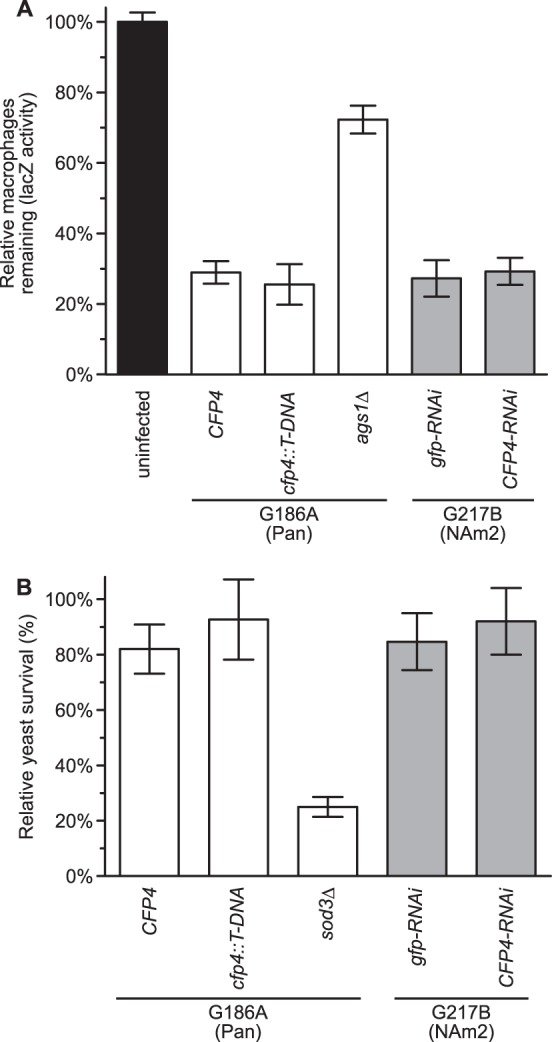FIG 6.

Cfp4 production is not essential for Panama or NAm2 lineage Histoplasma virulence in macrophages. (A) Determination of macrophage killing ability of yeasts with and without Cfp4. P388D1 macrophages expressing LacZ were infected with Histoplasma yeasts at a multiplicity of infection (MOI) of 1:1. After 7 days of coculture, the relative survival of macrophages was determined by quantifying the remaining macrophage-produced LacZ activity. As controls, macrophages were left uninfected or were infected with the attenuated Histoplasma strain lacking α-glucan (ags1Δ; strain OSU18), which is deficient in macrophage killing. (B) Histoplasma yeast survival in IFN-γ-activated human macrophages with and without Cfp4. Human macrophages were derived from peripheral blood monocytes, activated with IFN-γ, and infected with Histoplasma yeasts at an MOI of 1:50. Yeast survival was determined by enumeration of viable CFU after 4 h of coincubation at 37°C. Results are plotted as survival relative to yeasts incubated in the absence of macrophages. In all experiments, the data represent the means ± standard deviations (n = 3 replicates). All macrophage infections were conducted using Cfp4-producing yeasts (CFP4; strain OSU45) or cfp4 mutant yeasts (cfp4::T-DNA; strain OSU84) of the G186A (Panama) background or Cfp4-producing yeasts (gfp-RNAi; strain OSU37) or Cfp4-depleted yeasts (CFP4-RNAi; strain OSU87) of the G217B (NAm2) background. The superoxide dismutase-deficient sod3Δ strain (OSU15) was used as a control for attenuated survival in macrophages. No statistically significant differences were detected (Student's t test) between infections with Cfp4-producing and Cfp4-deficient strains.
